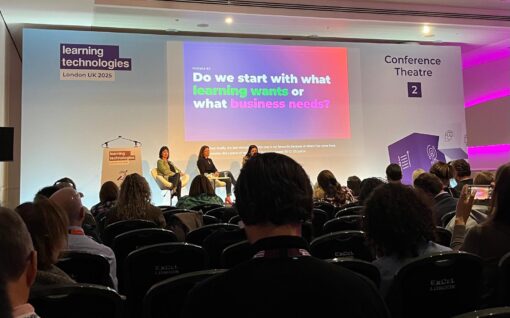The brand relevance sniff test

As a part of our marketing accelerator impact assessment we carry out what we call the brand relevance sniff test. For this we spend 30 seconds looking at a brand’s website to see if we can understand what the brand does, who it does it for and how it does it. People tend to spend far less than 30 seconds on a site (and most will probably interact with a brand across a range of channels) but we think this is enough time to get the core message over to visitors and prospective buyers.
In the lead in to the Learning Technologies conference 2020 we decided to pick 20 exhibitors at random and run the sniff test on them. We decided to do this because exhibition visitors might find themselves experiencing the same or similar messages on their stands at the event. For this test, we identify the audience as L&D professionals and measure relevance in terms of the relevance of the brand messaging to the challenges faced by the audience.
The brands we looked at will remain anonymous as our intention here is to share some useful insights. To that end, we take a look at what’s good and what’s not.
What works
Interestingly, there are common themes across what works and what doesn’t work. The most relevant brands are those who clearly articulate what they do. Most of the sample did not do this (see below), but some provided clear, unambiguous messaging about what it is they do. This was quick and easy to understand.
Another area where some brands scored highly is who they work with. Thirty seconds is not long to tell a user who you are, what you do and the clients you work with. Some brands make this easier to find by putting client logos on the home page or by mentioning them in the text. Often this information is tucked away in a different menu on the homepage. If it takes too long to read other messaging on the site then you won’t get to this information.
What doesn’t work
Many brands are guilty of presenting aspirational statements sprinkled with buzzwords as the main messaging on their site. This means the visitor has to work harder to figure out what the company does. We found that 30 seconds is taken up by trying to make sense of the aspiration. As a prospect I want to know what you do. I also want to see the evidence that backs up the claims that are made. There is little evidence on show.
Linked to the above point is the problem of style over substance. Over engineered design does not help the customer quickly grasp what you do and why your offer could be of value to them.
Finally, none of the sites we looked at featured the customer voice on the homepage. We had no idea what they have to say about what you do for them. This does not mean providing case studies on the homepage. It means hooking visitors with great customer quotes or stories. Or a soundbite sharing the impact your tech had for your customer.
Some take-aways for Learning Technologies 2020 and beyond
A useful staring point for building relevance for any brand is to ask: What are our potential customers looking for and what do they need from us that shows how we can help?
This small sample shows that brands tend to push what they want to say versus what visitors would like to hear. And in pushing what they want to say, brands tend to use the latest buzzwords which can dilute the message. This becomes problematic when lots of learning suppliers adopt the same buzzwords even when what they offer might be different. This is a trap to avoid, especially when exhibiting at Learning Technologies because you do not want to be promoting a message that many other exhibitors will also be promoting.
Think about your customer and potential customer. They have business and learning challenges they are looking to solve and they are looking for the right solution. You want to communicate that you are that solution. And you want to be able to demonstrate that through evidence, be it customer testimony or analytics. And remember, how you work as a business is becoming increasingly important to learning teams. They are looking to partner with suppliers who are the right fit. How do you show that?
Here’s a short video summary of this research . . .

